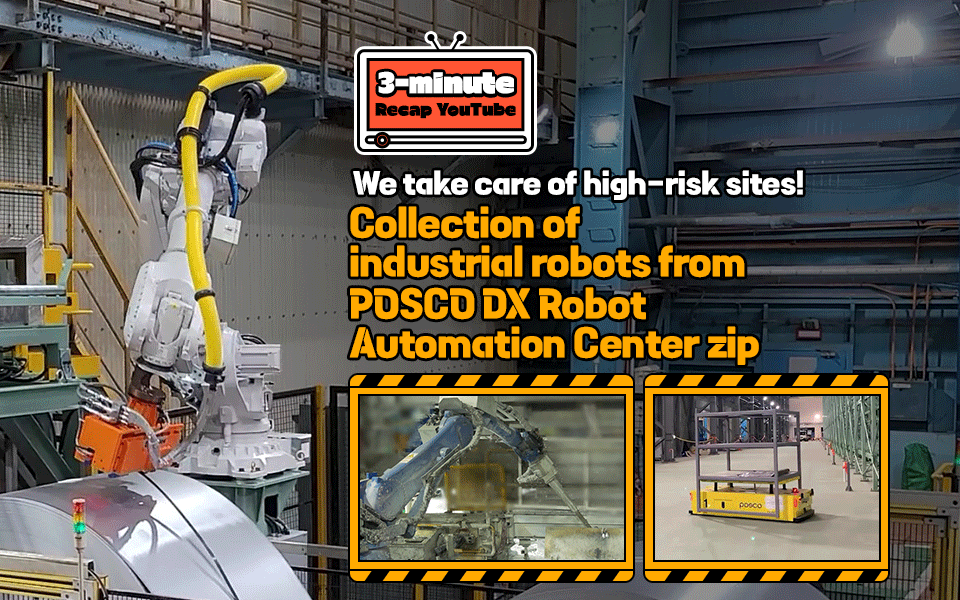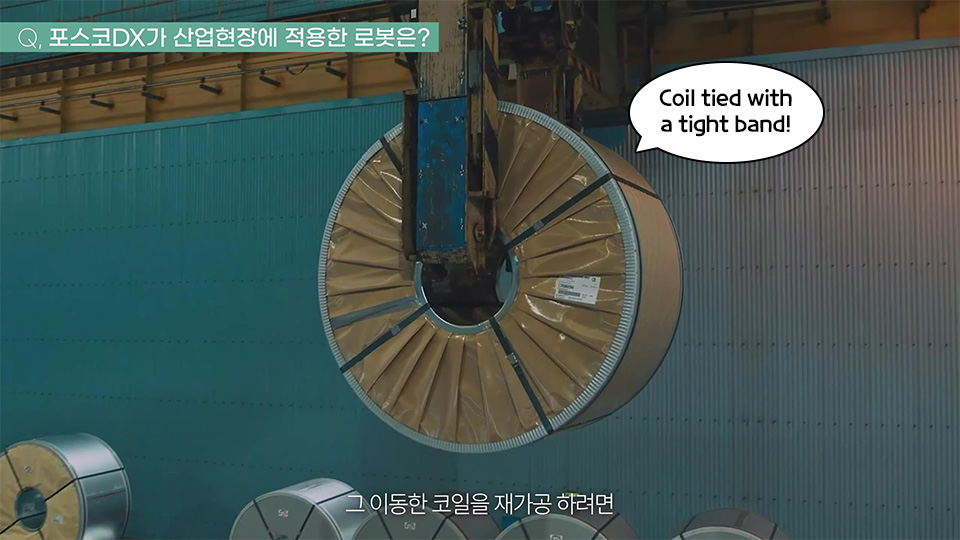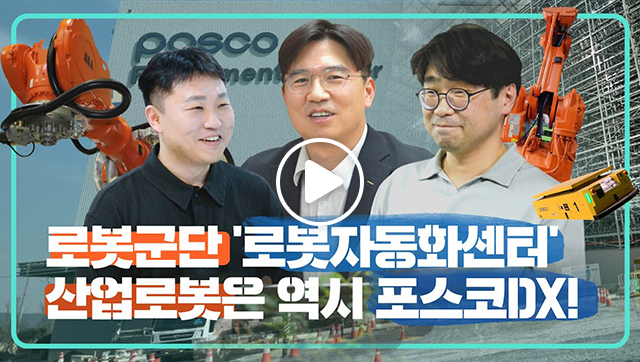
Save your valuable time. Watch a short version of a long YouTube video in just 3 minutes! In this article, we will introduce POSCO DX’s Robot Automation Center. Shall we listen to the story of POSCO DX Robot Automation Center, which is establishing safe and productive industrial sites by applying industrial robots to high-risk and high-intensity sites?
There are many dangerous and difficult processes at industrial sites. POSCO Group, the largest steel company in Korea, makes molten steel in a blast furnace with temperatures above 1,000℃, removes impurities, and produces high-quality steel with its own recipe. Due to the nature of this work, the company needs engineers with advanced know-how accumulated over 20 to 30 years.
However, a large number of highly skilled workers who have played an active role in the field are about to retire. That number is 7.4 million, accounting for 25% of the economically active population. As a result, companies are increasingly demanding industrial robots that reflect the technical know-how of veteran employees.
POSCO DX is particularly distinguished in the industrial robot market. Now, let’s take a look at the POSCO DX Robot Automation Center and the robot business!

The new POSCO DX Robot Automation Center established earlier this year is an organization that operates robot engineering in manufacturing and logistics as well as software technology for very dangerous and high-intensity work in steel mills based on its know-how at industrial sites. It is spurring the spread of AI robots at industrial sites to create a safe work environment.
Steel mills are considered representative high-risk sites because they handle molten steel. If they are automated with robots, safe work sites can be established. If robots are used in dangerous sites and people are assigned to other places, work productivity will naturally improve.
POSCO DX is becoming an “intelligent factory” powerhouse, automating everything from manufacturing to winning orders and sales beyond a smart factory! Let’s take a closer look at the examples POSCO DX has applied in the field.
![]()

① Dross Removal Robot
POSCO Gwangyang Steelworks No. 4 Plating Plant has a process for covering the surface of steel with zinc. In this case, when high-temperature zinc and the steel plate come into contact, a foreign substance called dross* is formed and the process will go smoothly only when this is removed at the right time. However, the zinc plating pot containing boiling hot zinc reaches temperatures around 460℃.
*Dross: Waste material formed when high-temperature zinc and steel plates come into contact.

Now, instead of people, dross removal robots constantly remove dross from the surface of the hot zinc plating pot in the field. In No. 4 Plating Plant, workers are usually in the operating room, and robots take care of the dangerous sites. Prior to the introduction of robots, a team consisting of four workers manually skimmed off foreign substances 10 times a day.
② Band Cutter Automation Robot
In addition, POSCO DX, along with Pohang Steelworks, pushed for the automation of the band cutter in the cold rolling process.

The coils produced in the rolling process of steel materials are thin and bound by bands and shipped to each plant in the form of rolls so that they do not unravel as they move. To perform reprocessing, the band binding the coil has to be removed, but at this time, the band may bounce off and injure workers.

To prevent such safety accidents, POSCO DX introduced the band cutter automation robot. This robot is expected to be expanded further since it can be applied not only to the rolling process but also to the stainless steel and electrical steel production processes.
③ Saggar Robot
Furthermore, POSCO DX is strengthening cooperation with the POSCO Future M Gwangyang cathode materials plant, which produces rechargeable battery materials.

They applied a robot automation system to replace a saggar, a refractory container for baking cathode materials. Saggar is contained in lithium and baked, and corrodes easily, so it must be replaced regularly, but the work intensity is high due to the large quantity.

However, POSCO Future M detected waste saggar with X-rays and POSCO DX automated the work of replacing the detected waste saggar with new saggar, reducing worker fatigue and performing the work more efficiently! POSCO DX and POSCO Future M are also closely collaborating to apply this automation system to the Pohang NCA cathode materials plant.
④ Automated Guided Vehicle (AGV) and AGV Control System (ACS)
POSCO DX’s robot technology was introduced to the POSCO Fulfillment Center in Gwangyang, which was completed this year.

POSCO DX has introduced robots from various manufacturers that play different roles in the field, and applied ACS* solutions for the integrated management of collaboration between robots and task assignments. ACS is a system that assigns a tasks to an Automated Guided Vehicle (AGV) or an Autonomous Mobile Robot (AMR), and creates the optimal route so they do not collide with each other. This system was jointly developed with Daim Research.
*AGV Control System (ACS): A system that controls the traffic of multiple unmanned transport devices.
In addition, POSCO Future M is increasing the capacity of cathode material production and automating raw material transport by using unmanned transport robots. This project is now underway in Pohang, Gwangyang, and Quebec City.
POSCO DX plans to become a leading company in improving safety and productivity by providing industrial robot solutions not only to POSCO Group but also to various high-intensity and high-risk sites. Please keep an eye on POSCO DX, which will grow into a company specializing in intelligent factories beyond smart factories based on its creative robot technologies!

